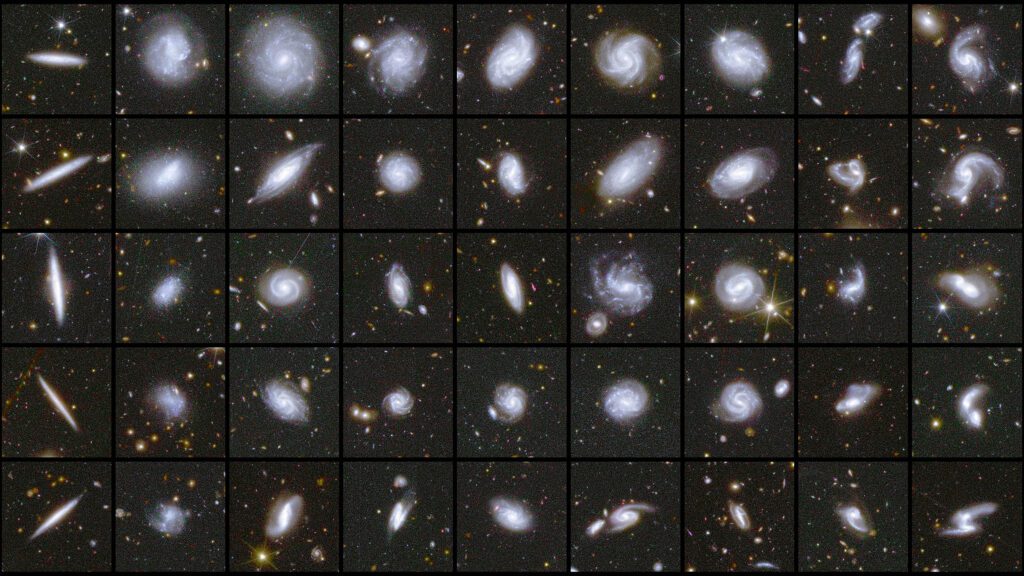The European Space Agency (ESA) has released initial survey data from its Euclidean Mission, showcasing a vast collection of images featuring galaxies, clusters, and deep space fields. This marks the beginning of what will be one of the most extensive space maps ever produced, with the first release highlighting observations of over 26 million galaxies, including quasars up to 10.5 billion light-years away. Euclidean’s deep field mosaics reveal the structure of the universe, showing the distribution and characteristics of galaxies, providing insights into dark matter and dark energy.
The mission has mapped 63 square degrees of the sky in just a week and aims to ultimately cover about 14,000 square degrees. To process the enormous amount of data—100 GB daily—scientists are employing AI and citizen science. A new catalogue of over 380,000 galaxies has been created, classified by their shape and features with the help of an algorithm developed from contributions by nearly 10,000 volunteers.
Additionally, the Euclidean Mission has identified around 500 potential gravity lenses, which are valuable for revealing hidden dark matter. By the end of the mission, it expects to find about 100,000 such lenses. Scientific work for the Euclidean mission will continue into March 2025, and a complete dataset is anticipated by October 2026.
Euclidean, launched in July 2023, is being developed with the support of NASA and various companies and involves over 2,000 scientists from 15 countries. The project marks a significant step in astronomical research, revealing further insights into the universe’s hidden structures.
Source link


